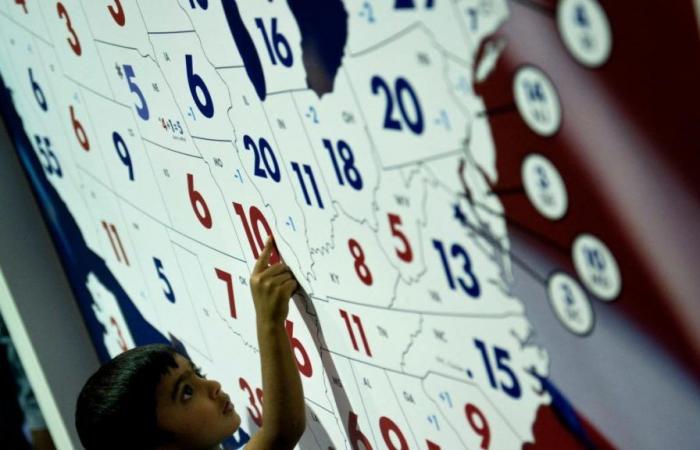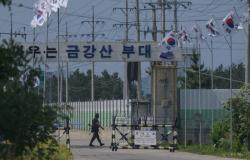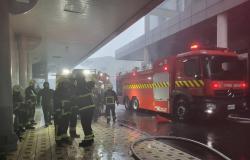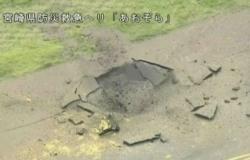The resounding arrival of the vice-president in the race after the historic withdrawal of Joe Biden in July gave hope to the Democratic Party, which was trembling in the face of the octogenarian leader’s poor polls.
But if Kamala Harris is close to Donald Trump in the opinion polls, or even slightly ahead at the national level, she has not really taken the advantage in the only states that count, the seven “swing states”: Arizona, North Carolina, Georgia, Michigan, Nevada, Pennsylvania and Wisconsin.
As in 2016, as in 2020, a few tens of thousands of votes in this handful of states could decide who, the 59-year-old former magistrate or the 78-year-old billionaire, will garner the 270 electors synonymous with victory.
The vice president is betting that America is ready for a “new generation” of leaders.
Clearly, that the country wants to break with Donald Trump by electing its first “commander in chief”, born to a Jamaican father and an Indian mother, whose personality and career promise promise of change.
Kamala Harris did not go into detail about her resolutely centrist program, mixing firmness on immigration, promises of help for the middle class and defense of the right to abortion – a subject on which the Republicans are particularly bad at ease.
Faced with the violent attacks, even insults, from Donald Trump, the Democratic candidate uses a less frontal register, poking at the well-known susceptibility of her rival, as she did during their September debate, with undeniable success. .
She called him a “weak” candidate, “fired” by his fellow citizens in 2020.
Also read
United States: a vice-presidential debate without a big winner despite ideas at odds with each other
Candidate for the White House for the third time, Donald Trump is replaying his score from 2016 and 2020, presenting himself as an anti-system tribune, close to the people, very critical of the Washington elites.
His campaign credo? Always the same: the fight against immigration, which according to him “destroys” American cities.
During each of his meetings, the septuagenarian paints, with dramatic music, an extremely dark picture of a country ravaged by “terrorist” and “rapist” migrants, leaving the worst “prisons and madhouses”.
He also bludgeons his Democratic rival on inflation, accusing the one he nicknames “Comrade Kamala”, of wanting to put in place measures “straight out of Venezuela or the Soviet Union” to counter the rise in prices.
A sea of supporters in red caps continues to flock to his campaign rallies, fundamentally convinced that their champion, convicted criminally at the end of May, is the victim of disgusting political persecution. Even that the Democrats are directly fomenting the threats against him.
Donald Trump himself attributed his second assassination attempt to the “rhetoric” of his adversaries, while the Democrats, on the contrary, accuse him of being the instigator of a sometimes unbreathable political climate.
As the November 5 election approaches, illustrations of this political tension are omnipresent. The electoral centers of the most contested counties, targets of high tensions four years ago, have turned into fortresses, protected by wrought iron fences and metal detectors.
The certification of the results of the presidential election at the Capitol, the scene on January 6, 2021 of an attack by unleashed Trumpists, will this time be supervised by the highest level of security possible for an official event.
The fear is that, once again, the vote will be so close that it will take not hours, but days to declare a winner.






